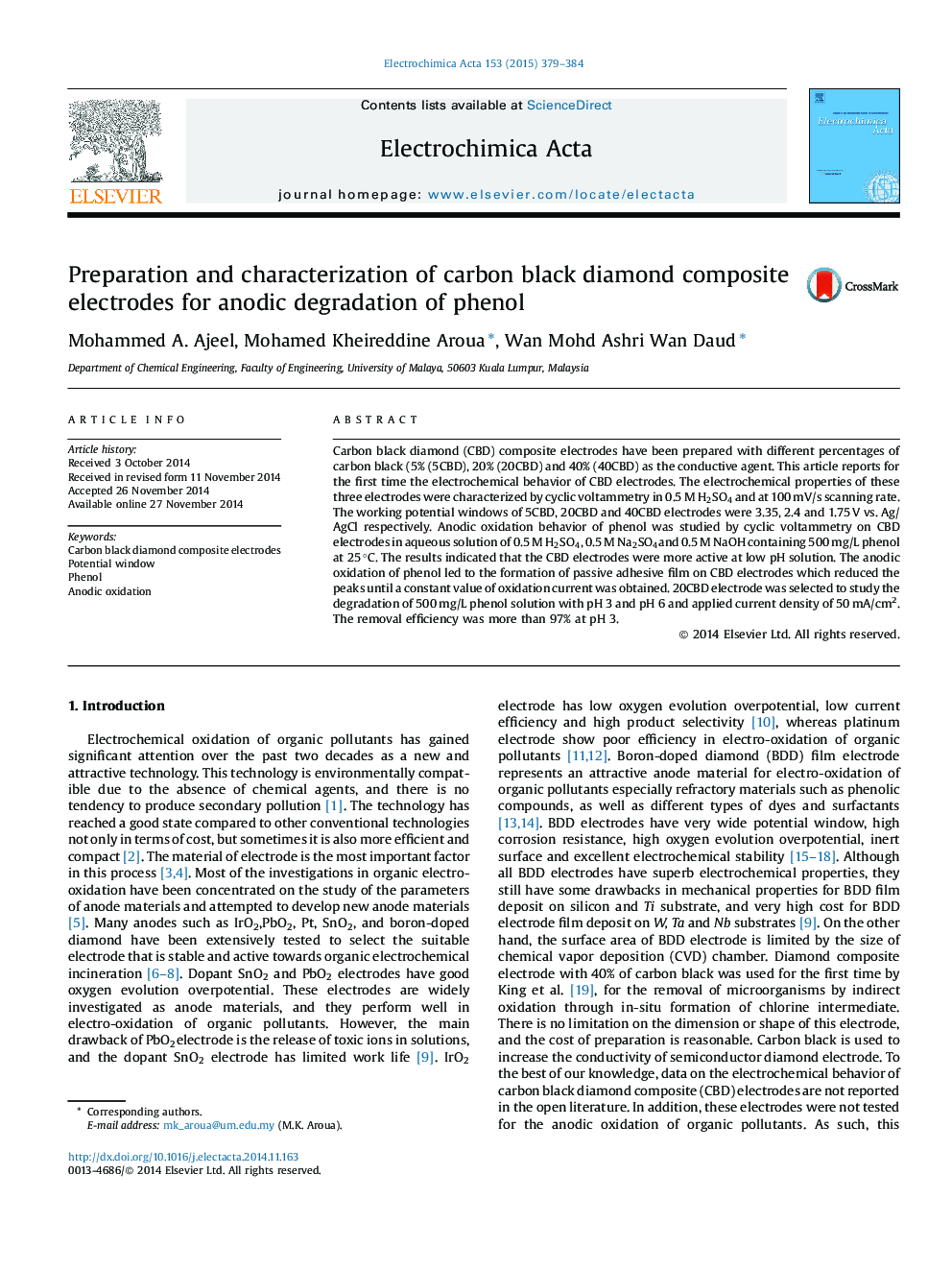| کد مقاله | کد نشریه | سال انتشار | مقاله انگلیسی | نسخه تمام متن |
|---|---|---|---|---|
| 184768 | 459581 | 2015 | 6 صفحه PDF | دانلود رایگان |
• Carbon black diamond (CBD) composite electrodes prepared with four different percent of carbon black.
• Electrochemical characteristic of CBD electrodes was by cyclic voltammetry.
• Anodic oxidation behavior of phenol was investigated by cyclic voltammetry on CBD electrodes.
• The phenol electrochemical degradation was 97% after 27 h at pH 3.
• Fumaric acid was the main intermediate in electro-degradation process.
Carbon black diamond (CBD) composite electrodes have been prepared with different percentages of carbon black (5% (5CBD), 20% (20CBD) and 40% (40CBD) as the conductive agent. This article reports for the first time the electrochemical behavior of CBD electrodes. The electrochemical properties of these three electrodes were characterized by cyclic voltammetry in 0.5 M H2SO4H2SO4 and at 100 mV/s scanning rate. The working potential windows of 5CBD, 20CBD and 40CBD electrodes were 3.35, 2.4 and 1.75 V vs. Ag/AgCl respectively. Anodic oxidation behavior of phenol was studied by cyclic voltammetry on CBD electrodes in aqueous solution of 0.5 M H2SO4H2SO4, 0.5 M Na2SO4Na2SO4and 0.5 M NaOH containing 500 mg/L phenol at 25 °C. The results indicated that the CBD electrodes were more active at low pH solution. The anodic oxidation of phenol led to the formation of passive adhesive film on CBD electrodes which reduced the peaks until a constant value of oxidation current was obtained. 20CBD electrode was selected to study the degradation of 500 mg/L phenol solution with pH 3 and pH 6 and applied current density of 50 mA/cm2. The removal efficiency was more than 97% at pH 3.
Journal: Electrochimica Acta - Volume 153, 20 January 2015, Pages 379–384
